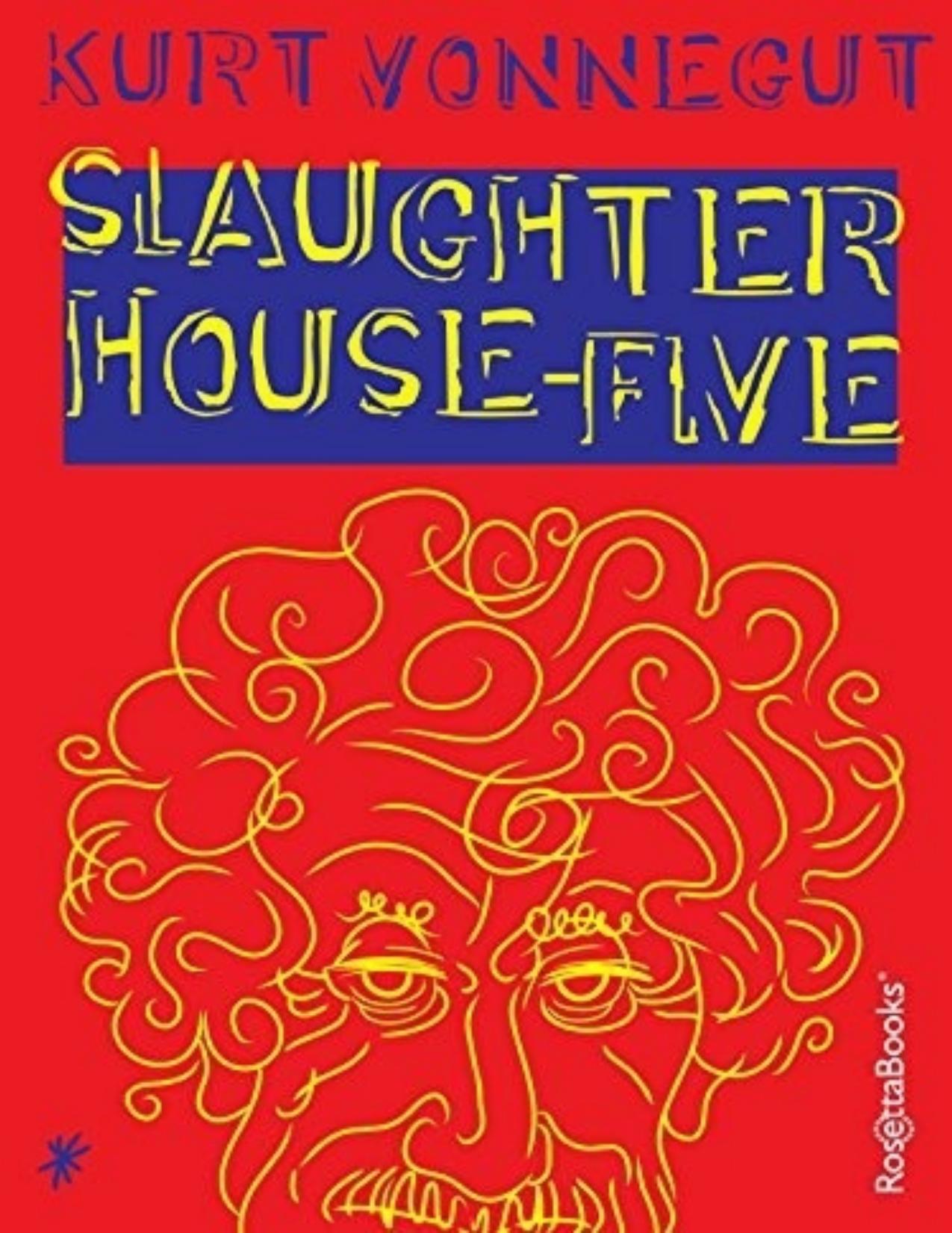
Slaughterhouse-Five PDF
Preview Slaughterhouse-Five
Adapted for a magnificent George Roy Hill film three years later (perhaps the only film adaptation of a masterpiece which exceeds its source), Slaughterhouse-Five (1969) is the now famous parable of Billy Pilgrim, a World War II veteran and POW, who has in the later stage of his life become "unstuck in time" and who experiences at will (or unwillingly) all known events of his chronology out of order and sometimes simultaneously.
Traumatized by the bombing of Dresden at the time he had been imprisoned, Pilgrim drifts through all events and history, sometimes deeply implicated, sometimes a witness. He is surrounded by Vonnegut's usual large cast of continuing characters (notably here the hack science fiction writer Kilgore Trout and the alien Tralmafadorians who oversee his life and remind him constantly that there is no causation, no order, no motive to existence).
The "unstuck" nature of Pilgrim's experience may constitute an early novelistic use of what we now call Post Traumatic Stress Disorder; then again, Pilgrim's aliens may be as "real" as Dresden is real to him. Struggling to find some purpose, order or meaning to his existence and humanity's, Pilgrim meets the beauteous and mysterious Montana Wildhack (certainly the author's best character name), has a child with her and drifts on some supernal plane, finally, in which Kilgore Trout, the Tralmafadorians, Montana Wildhack and the ruins of Dresden do not merge but rather disperse through all planes of existence.
Slaughterhouse-Five was hugely successful, brought Vonnegut an enormous audience, was a finalist for the National Book Award and a bestseller and remains four decades later as timeless and shattering a war fiction as Catch-22, with which it stands as the two signal novels of their riotous and furious decade.
ABOUT THE AUTHOR
Kurt Vonnegut (1922-2007) is one of the most beloved American writers of the twentieth century. Vonnegut's audience increased steadily since his first five pieces in the 1950s and grew from there. His 1968 novel Slaughterhouse-Five has become a canonic war novel with Joseph Heller's Catch-22 to form the truest and darkest of what came from World War II.
Vonnegut began his career as a science fiction writer, and his early novels--Player Piano and The Sirens of Titan--were categorized as such even as they appealed to an audience far beyond the reach of the category. In the 1960s, Vonnegut became closely associated with the Baby Boomer generation, a writer on that side, so to speak.
Now that Vonnegut's work has been studied as a large body of work, it has been more deeply understood and unified. There is a consistency to his satirical insight, humor and anger which makes his work so synergistic. It seems clear that the more of Vonnegut's work you read, the more it resonates and the more you wish to read. Scholars believe that Vonnegut's reputation (like Mark Twain's) will grow steadily through the decades as his work continues to increase in relevance and new connections are formed, new insights made.
ABOUT THE SERIES
Author Kurt Vonnegut is considered by most to be one of the most important writers of the twentieth century. His books Slaughterhouse-Five (named after Vonnegut's World War II POW experience) and Cat's Cradle are considered among his top works. RosettaBooks offers here a complete range of Vonnegut's work, including his first novel (Player Piano, 1952) for readers familiar with Vonnegut's work as well as newcomers.
Amazon.com ReviewKurt Vonnegut's absurdist classic Slaughterhouse-Five introduces us to Billy Pilgrim, a man who becomes unstuck in time after he is abducted by aliens from the planet Tralfamadore. In a plot-scrambling display of virtuosity, we follow Pilgrim simultaneously through all phases of his life, concentrating on his (and Vonnegut's) shattering experience as an American prisoner of war who witnesses the firebombing of Dresden.
Don't let the ease of reading fool you--Vonnegut's isn't a conventional, or simple, novel. He writes, "There are almost no characters in this story, and almost no dramatic confrontations, because most of the people in it are so sick, and so much the listless playthings of enormous forces. One of the main effects of war, after all, is that people are discouraged from being characters..." Slaughterhouse-Five (taken from the name of the building where the POWs were held) is not only Vonnegut's most powerful book, it is as important as any written since 1945. Like Catch- 22, it fashions the author's experiences in the Second World War into an eloquent and deeply funny plea against butchery in the service of authority. Slaughterhouse-Five boasts the same imagination, humanity, and gleeful appreciation of the absurd found in Vonnegut's other works, but the book's basis in rock-hard, tragic fact gives it a unique poignancy--and humor.
From Publishers Weekly"Listen: Billy Pilgrim has become unstuck in time." So begins Vonnegut's absurdist 1969 classic. Hawke rises to the occasion of performing this sliced-and-diced narrative, which is part sci-fi and partially based on Vonnegut's experience as a American prisoner of war in Dresden, Germany during the firebombing of 1945 that killed thousands of civilians. Billy travels in time and space, stopping here and there throughout his life, including his long visit to the planet Tralfamador, where he is mated with a porn star. Hawke adopts a confidential, whisper-like tone for his reading. Listening to him is like listening to someone tell you a story in the back of a bus—the perfect pitch for this book. After the novel ends, Vonnegut himself speaks for a short while about his survival of the Dresden firestorm and describes and names the man who inspired this story. Tacked on to the very end of this audio smorgasbord is music, a dance single that uses a vintage recording of Vonnegut reading from the book. Though Hawke's reading is excellent, one cannot help but wish Vonnegut himself had read the entire text.
Copyright © Reed Business Information, a division of Reed Elsevier Inc. All rights reserved.
